
Cigar Wrapper Types: A Complete Guide for Beginners
The cigar wrapper is arguably the most important part of a cigar. This is not necessarily because of how it tastes or burns, but because it’s our first point of contact. Before we light up, the wrapper is the first thing we see and feel. It usually plays a big role in which cigar we choose. That’s why understanding the different cigar wrappers is so important. It can really enhance the overall cigar experience.
Sorting through all the different wrapper leaves isn’t always easy. Each wrapper is categorized largely by the color of the leaf. To simplify things, we’ll break them down into eight main types. Each of these is broken down into origin, color, typical flavor notes, and notable cigar types. Find out more below.
What Is a Cigar Wrapper?
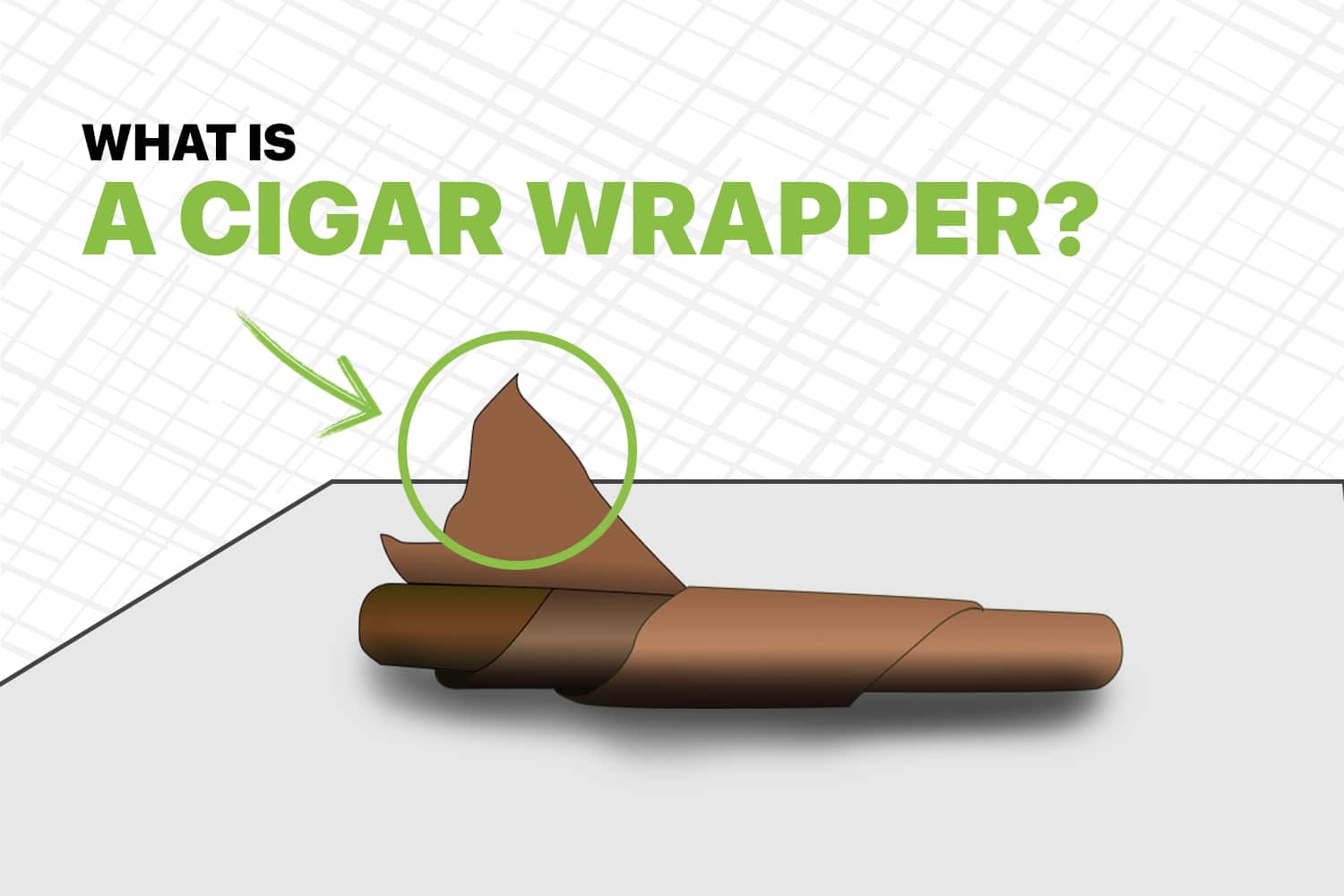
A cigar wrapper is considered the most visually appealing leaf on a cigar. Carefully constructed, the wrap is designed to appear perfect each time. After all, it’s the first thing a cigar enthusiast notices. The wrapper plays a major role in deciding whether a cigar gets picked up from the shelf. Imperfect cigar wrappers are regularly tossed out by manufacturers.
But it’s not just about appearance. While the filler and binder form the bulk of a cigar, the wrapper can still account for as much as 60-70% of its flavor. This is especially true for high-quality, hand-rolled Cuban cigars.
As well as this, wrappers also help classify cigars according to flavor profiles. These can range from light and creamy to bold and spicy, all based on color and the tobacco's origin.
High-quality, Cuban cigars should be smooth, blemish-free, and consistent in color. These are all details that reflect the care and skill behind its production.
What Makes a High-Quality Cigar Wrapper?
A high-quality cigar wrapper comes from carefully managed growing, harvesting, and curing processes. They are often harvested from the middle section of a tobacco plant, also known as the ‘Seco.’
Here are the key traits to look out for in a premium cigar wrapper:
- Appearance: This is the first thing you’ll notice about the cigar. Premium cigar wrappers will be silky or oily to the touch. Bumps and veins will be absent. Additionally, there will be a consistent shade of coloring throughout, without any discolorations.
- Flavor: High-quality wrappers are responsible for enhancing the cigar’s overall flavor. Usually, they’ll add some additional subtle flavor notes. These may be spicy, sweet, earthy, or creamy.
- Integrity: As you handle the cigar, check it for elasticity. The leaf should be stretchy enough to wrap around the cigar without tearing the surface. Conversely, it should be strong enough to hold the shape tightly.
- Burn: The quality of the cigar burn is another indicating factor. A good wrapper wrapper allows the cigar to burn consistently and evenly throughout. You’ll also notice more ash emanating from high-quality cigars.
- Craftsmanship: High-quality cigars and wrappers are usually produced in very specific regions. Cuba, the Dominican Republic, Nicaragua, and Honduras are all big players.
Common Cigar Wrapper Types
Cigars come in a wide variety of shapes, sizes, blends, and aromas. Each offers a unique smoking experience to be savored. Understanding the most common cigar wrapper types is a great place to start. It can guide you toward choosing cigars that match your taste. It will also help you refine your palate along the way.
In this section, we'll explore the most common cigar wrapper types. We’ll break down their most important attributes. As well as this we'll also discuss the unique flavor experience they bring to a cigar.
But before we dive into the glossary, let’s take a step back. We’ll start with two of the broadest categories for classifying cigars. These are Natural and Maduro. You can think of these as light and dark. Though both categories include more specific wrappers, they make things easier to understand.
They provide a simple way to differentiate between cigar types. When a cigar blend is available in both Natural and Maduro wrappers, the difference is clear. The Natural gives off a milder, nuttier flavor. The Maduro, on the other hand, brings a much sweeter or earthier flavor.
Double Claro
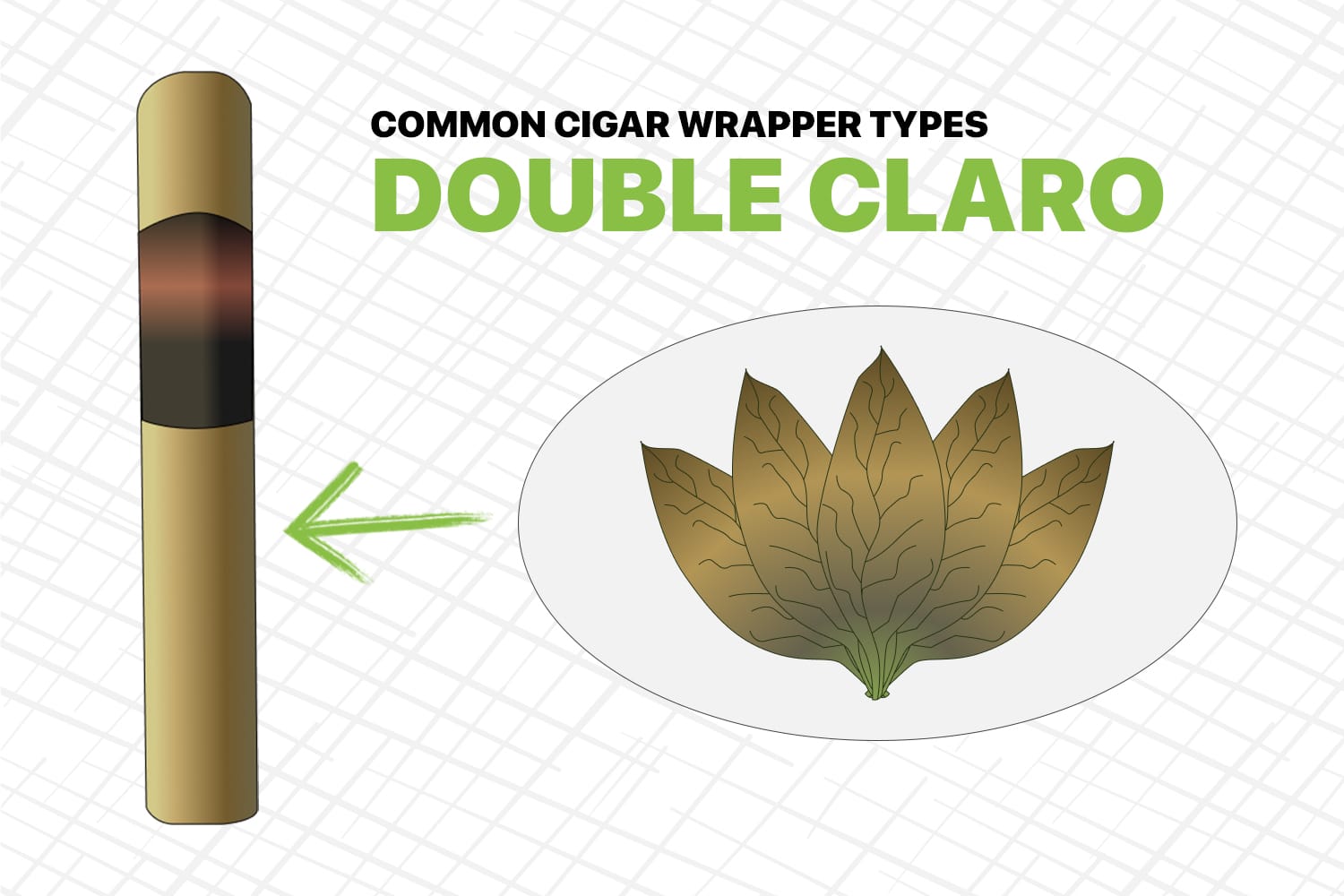
Also known as Candela or American Market Selection (AMS). This is due to its former popularity in the US. This wrapper has a distinctive green color. The unique hue is achieved through a process that locks in the chlorophyll. The Double Claro is recognized for its mild and grassy flavors. It’s a popular choice among both novice and experienced smokers.
Also known as Candela or American Market Selection (AMS). This is due to its former popularity in the US. This wrapper has a distinctive green color. The unique hue is achieved through a process that locks in the chlorophyll. The Double Claro is recognized for its mild and grassy flavors. It’s a popular choice among both novice and experienced smokers.
- Origin: Well-known examples of this cigar include La Flor Dominicana Double Claro. This features an Ecuadorian Candela wrapper.
- Color: Green to pale brownish-green.
- Flavor Notes: Light-bodied and grassy with hints of sweetness due to retained chlorophyll.
- Example Cigars: Arturo Fuente 8-5-8 Candela, La Flor Dominicana Double Claro.
Natural
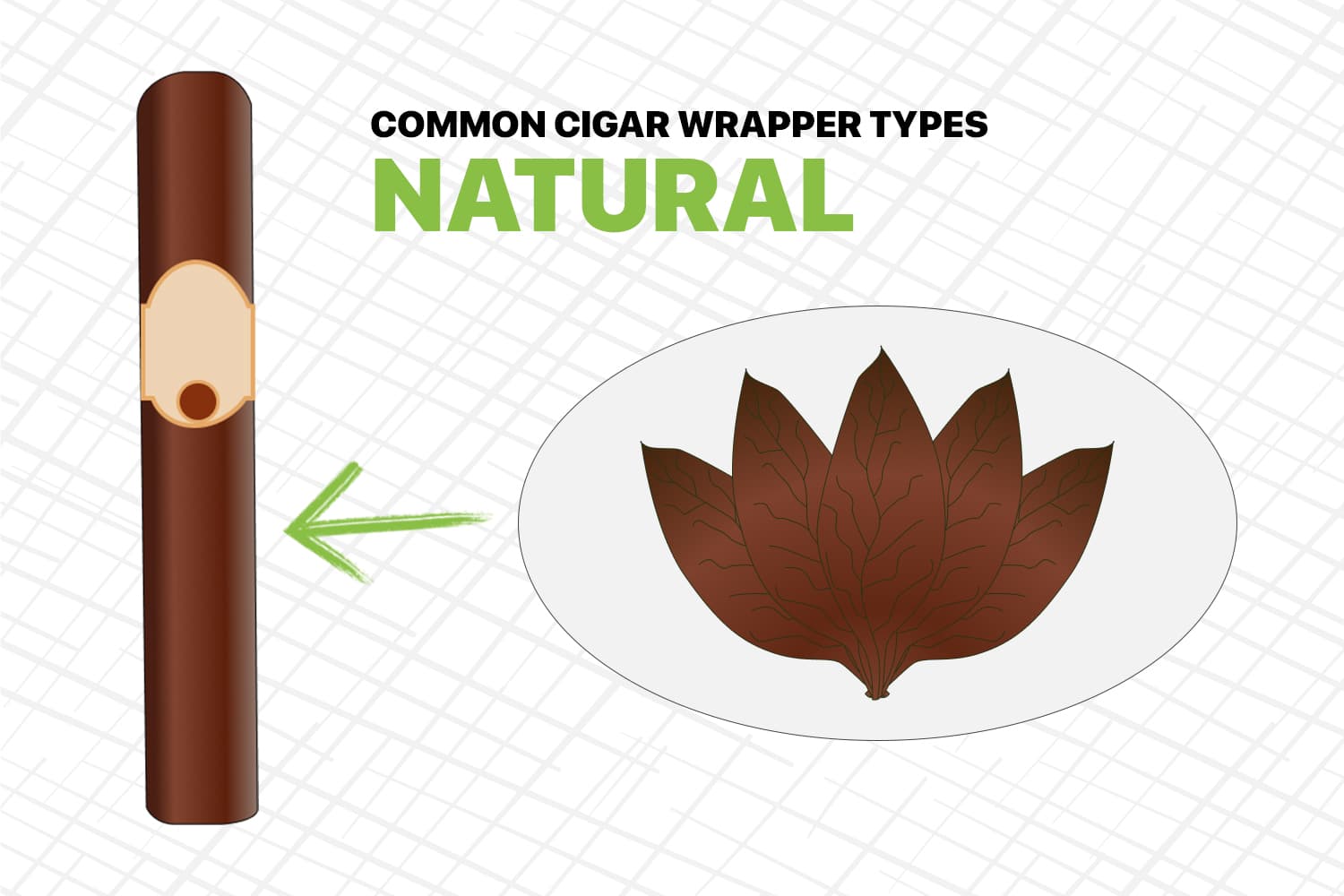
These medium brown colored leaves are often included within Claro or Colorado Claro. However, more accurately, they overlap the two. They are grown with less exposure to direct sunlight. This produces an overall lighter color and milder flavor experience.
Origin: Typically Sun Grown varieties from Central America and the Caribbean.
Color: Medium brown
Flavor Notes: Smooth, slightly richer than Claro. Sometimes described as earthy, nutty, spicy, and sweet.
Example Cigars: H. Upmann, Oliva Serie G
Colorado Claro
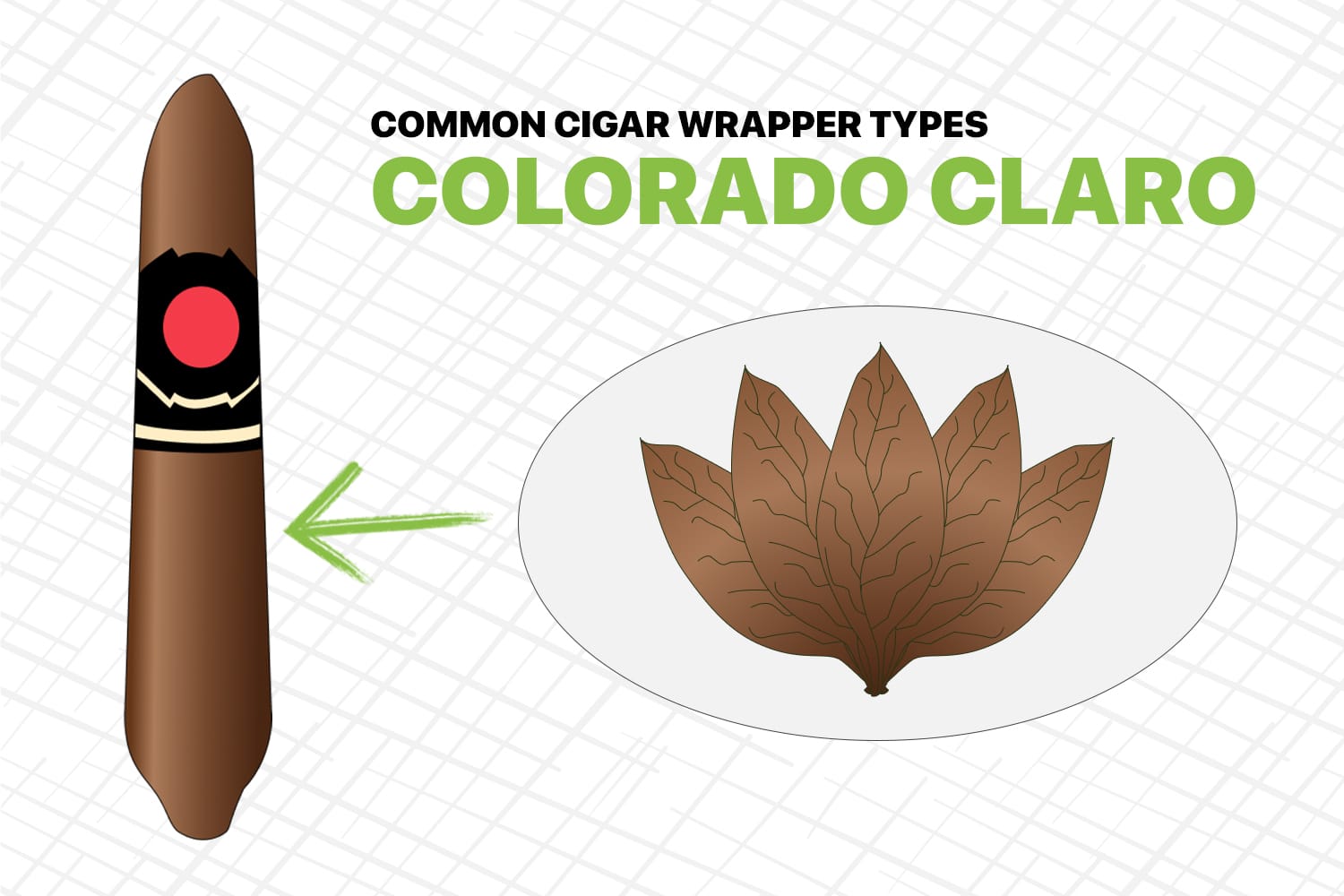
The wrap exhibits a slightly deeper color and flavor than the Natural or the Claro. These wrappers tend to appear at the center of the color spectrum. They strike a balance between lighter and darker wrappers. They also display an overall balanced flavor profile.
Origin: These tend to originate in Central America and the Caribbean. Most notably in countries like Nicaragua, Honduras, and the Dominican Republic.
Color: Medium brown to light reddish-brown.
Flavor Notes: Balanced flavors with subtle spice and sweetness.
Example Cigars: Arturo Fuente Hemingway, Oliva Serie G Cameroon
Colorado
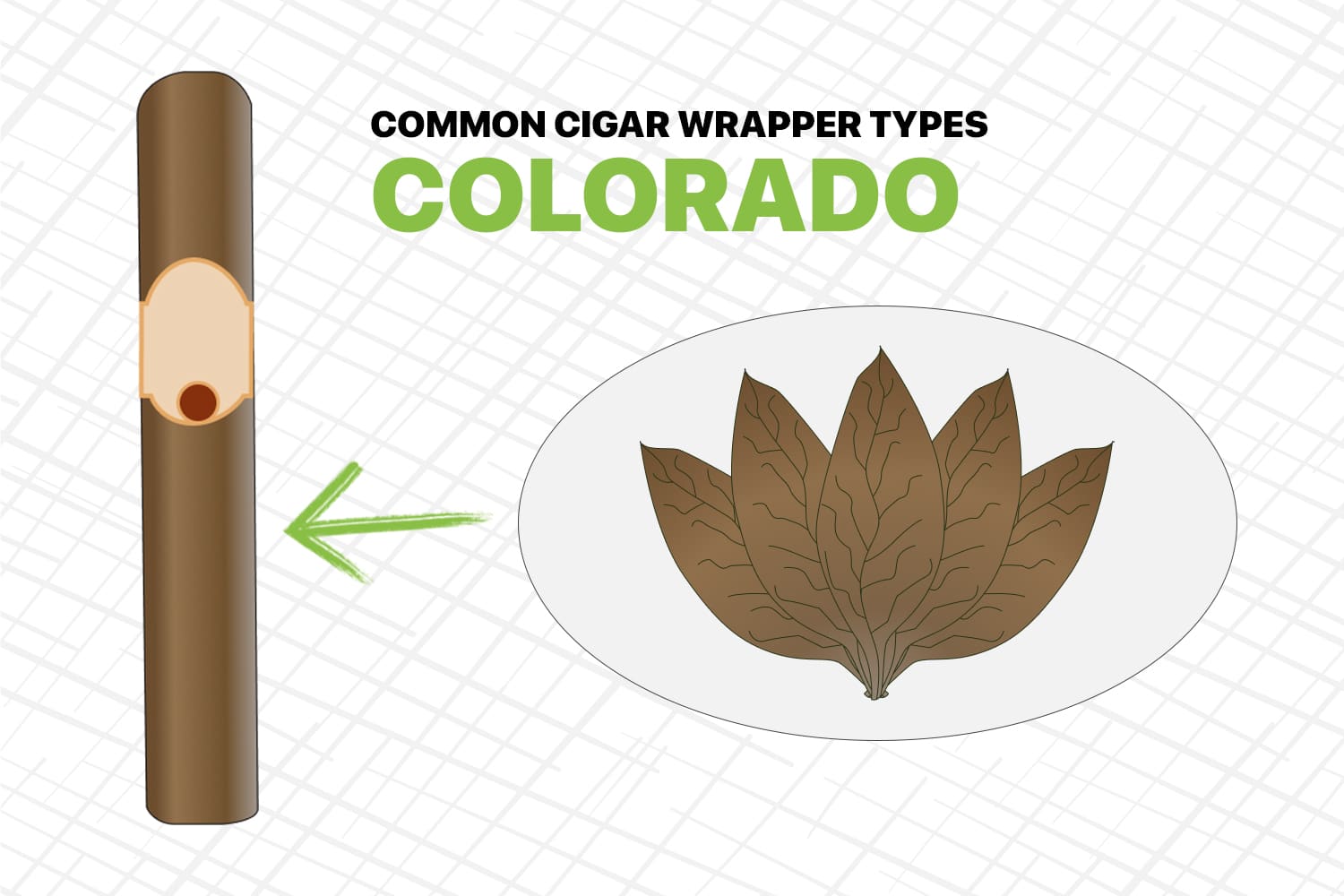
These are regarded as one of the most popular wrapper types, especially in Cuban cigars. They sit in the middle of the color spectrum. This strikes a balance between lighter, milder wrappers and darker, bolder ones. They are often appreciated by cigar enthusiasts. Aficionados enjoy their well-rounded mix of strength and flavor.
Origin: Widely grown in Cuba, Nicaragua, and Honduras
Color: Medium to dark brown, often with a reddish or “Rosado” tint.
Flavor Notes: Richer flavor. Displays an oilier texture than lighter wrappers, delivering a more pronounced richness.
Example Cigars: Romeo y Julieta, Cohiba Behike
Colorado Maduro
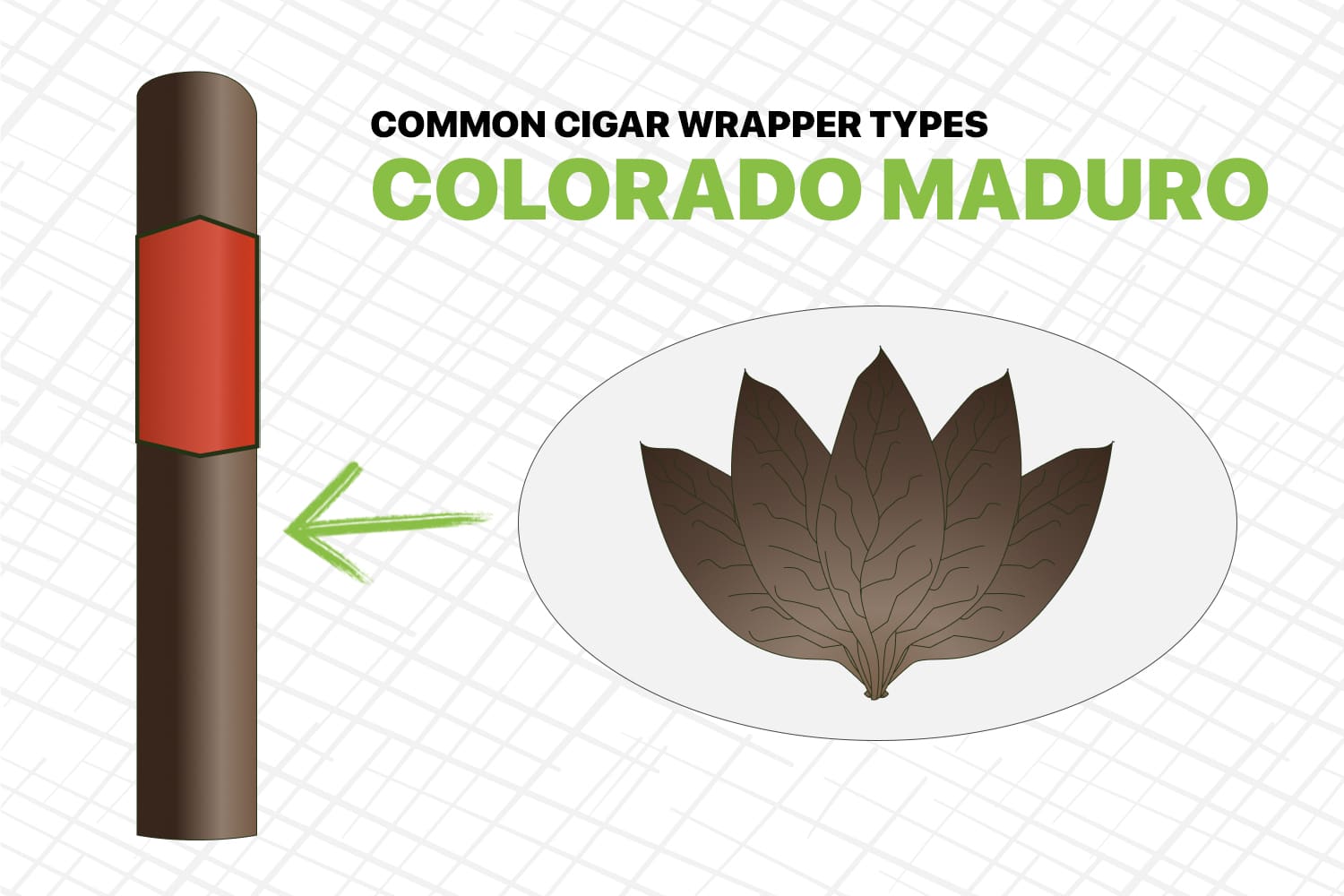
This textured leaf combines the richness of Maduro with the reddish tone of Colorado. It is recognizable by its dark brown, coffee-like color. Maduro is often called SMS (Spanish Market Selection). This is a reflection of the Spanish preference for darker, fuller-bodied cigars.
Origin: Frequently from Honduras (notably Corojo wrappers)
Color: Dark brown with a reddish tint
Flavor Notes: Full-bodied, aromatic, with notes of spice and cocoa.
Example Cigars: Camacho Corojo, Alec Bradley Prensado
Maduro
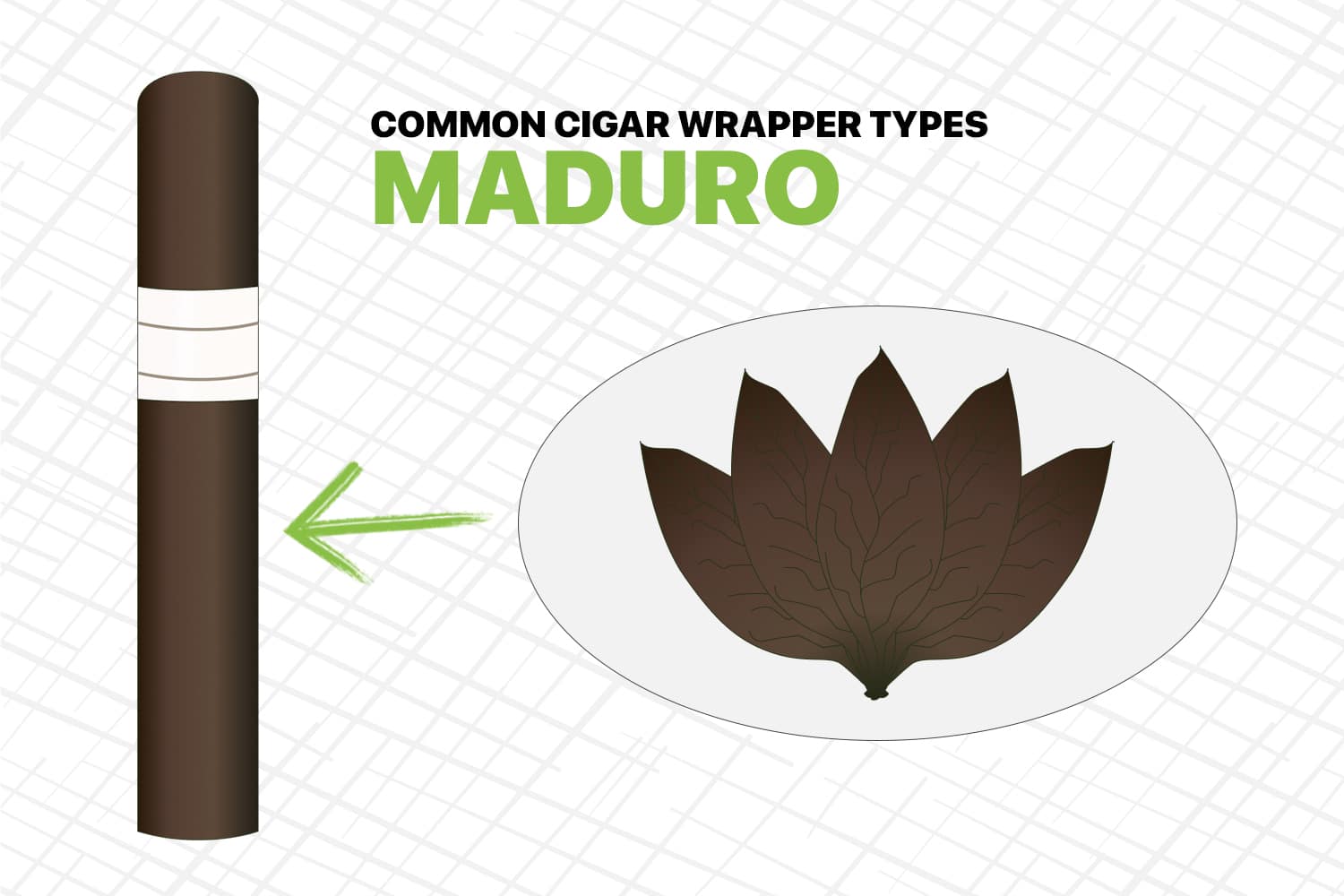
Maduro means “mature” or “ripe”. These leaves are reddish dark brown to near-black in color. They are often veiny and oily in appearance. They are also very rich and dark. This appearance comes from an extended fermentation process.
Origin: Connecticut Broadleaf (US), Nicaragua, Dominican Republic, Cuba
Color: Dark brown, nearing black, often very oily and veiny in appearance.
Flavor Notes: Sweet, earthy, chocolate, and coffee-based flavors. An overall full-bodied smoking experience.
Example Cigars: Liga Privada No. 9, Cohiba Maduro 5, Partagás.
Oscuro

Also known as Double Maduro or Negro. The Oscuro wrapper is the darkest of all wrappers, being almost black. The leaf is left atop the tobacco plant. Then, after harvesting, it is subjected to an extensive high-heat fermentation process.
Origin: Mexico and Nicaragua.
Color: Almost black
Flavor Notes: Intense, earthy, spicy, exhibiting a deep richness.
Example Cigars: CAO MX2
Discover More Cigar Parts
The cigar wrapper is your first contact with the cigar. It’s what you taste first yet its taste does not always linger. That’s because the cigar filler and binder begin to take over. Inhale, absorb the flavors, and immerse yourself in the cigar.
By using our handy cigar chart above, you’ll be in better control of your smoking experience. Wrappers come in a variety of types. They range from the light and mild Natural wrappers to the rich and sweet Maduro varieties. Whatever your preference, it’s important to have the right knowledge. This will help you as you start your cigar-smoking journey.The wrapper is the final, all-important part of the cigar. But enough analysing – now it’s time to light up and enjoy. Discover the finest Cuban cigars from your trusted Cuban cigar store.
Jun 04, 2025
Last Modified: Jun 04, 2025
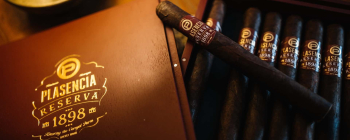
Table of Contents

